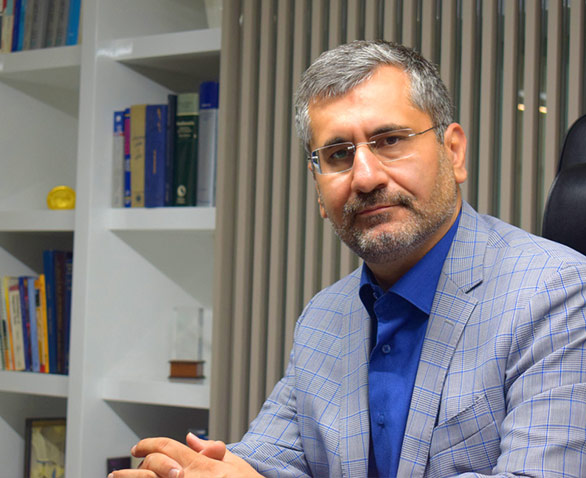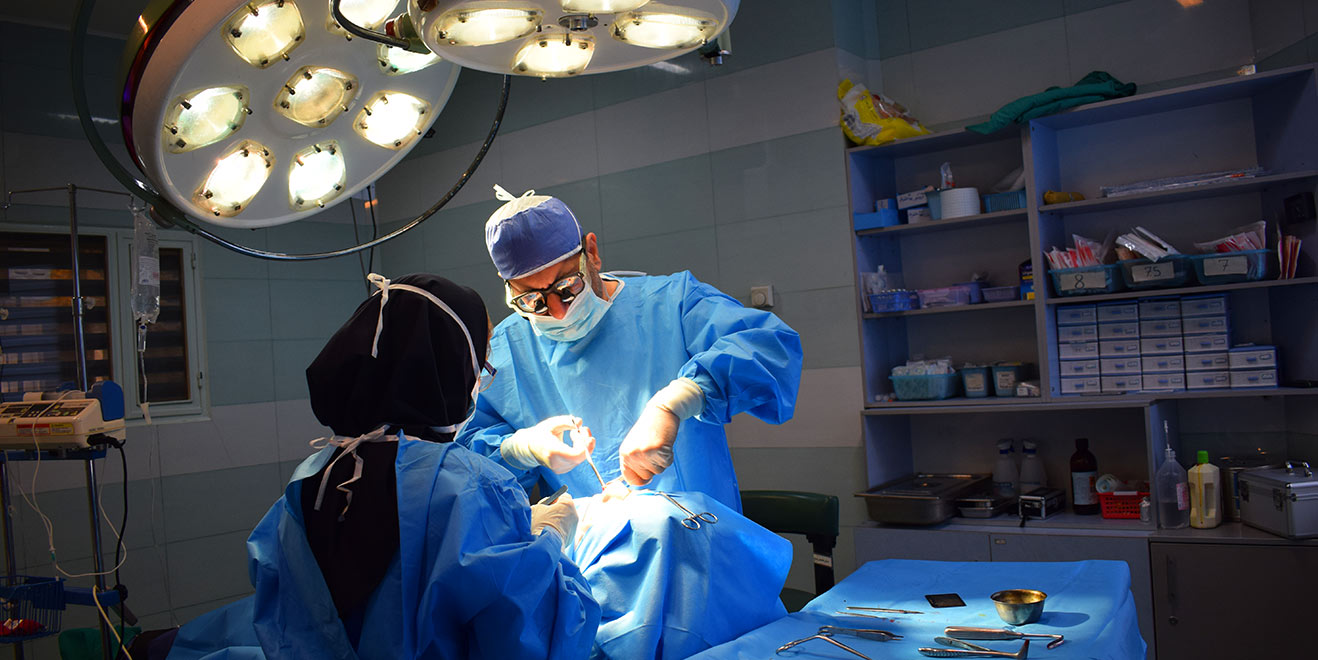About Me
Amir Arvin Sazgar MD

About Me
Accredited Facial Plastic Surgeon Otolaryngologist (Ear, Nose, and Throat Specialist) and Head and Neck Surgeon Full Professor at Tehran University of Medical Sciences Member of American Academy of Facial Plastic and Reconstructive Surgery
More about me
Education
General Medicine at Ferdowsi University of Mashhad Otolaryngology and Head and Neck Surgery at Tehran University of Medical Sciences Facial Plastic and Reconstructive Surgery Fellowship at Stanford University in the field of Facial Plastic Surgery
More about my EducationSCOPE OF MY WORK
SCOPE OF MY WORK
The nose is the central and prominent feature of the face. In addition to providing means for easy breathing and smelling, it plays a very important role in the beauty of the face. It may be said that no facial feature has a greater effect on the appearance of a person. Many rhinoplasty researchers consider this to be the most difficult type of plastic surgery of all. The great variety of noses and the role of numerous factors in the end result makes this type of surgery quite difficult.
When speaking about rhinoplasty, it is best to discuss types of nasal anomalies and malformations as well as the methods of treatment for each.
Many patients are ignorant of the fact that revision rhinoplasty following a prior unsuccessful rhinoplasty operation is much more difficult than an initial surgery. Many of the techniques for initial surgery cannot be utilized in many cases for revision rhinoplasty. Skilled surgeons make use of a series of advanced techniques that are specific to this type of rhinoplasty. In most cases, revision rhinoplasty is the patient’s last chance for correction of the shape and function of the nose. Therefore, it must be performed with the utmost care and skill.
Septoplasty refers to the corrective surgical procedure for straightening the nasal septum. It is performed to improve the breathing condition of the patient. The nasal septum is the partition that divides the nasal cavity into the right and left nostrils. The lower half of the septum is cartilaginous and the upper half is bony. The nasal septum continues growing until maturity. Several cartilage and bone building centers are involved in the balanced growth of the nasal septum. Obviously, if one or more of these centers grows more or less than normal for any reason, the nasal septum may be deviated toward the right or left of the midline. This deviation is often in the inner part of the nose and does not affect the external appearance of the nose.
Prominent ear refers to abnormal protrusion of the ear from the surface of the skull or existence of an unnaturally large angle between the auricle and the skull. This malformation may occur as a result of abnormality in the development of different parts of the auricle. This type of malformation usually transpires in both ears. When only one ear is involved, the malformation is more distressing for the patient.
In this malformation, the ears lack the lower lobes. Though this is a genetic disorder, in cases where the earlobe is severed due to a bite or fight, the ear has a similar shape. This abnormality is treated by grafting skin and cartilage from the areas around the ear.
Because in Iran wrestling is an important national sport, most people are familiar with cauliflower ear since it is common among wrestlers.
This type of abnormality follows numerous breaking of the auricles and subsequent accumulation of blood between the skin and cartilage in the ear.
Since this type of malformation is difficult to treat surgically and requires several operations, the best option is prevention. Wrestlers must be encouraged to refer to a specialist immediately after injury to the auricles and accumulation of blood beneath the skin for blood discharge and auricular molding.
Though use of heavy earrings is a major cause of split earlobes, it sometimes has genetic causes. It is recommended to avoid use of heavy earrings as well as earrings that may get stuck causing tearing in the earlobes.
In some cases, simple restorative techniques may be utilized to treat this problem. However, in many cases, advanced techniques such as L-plasty are required.
With age, the skin on the upper eyelid sags and becomes wrinkled. Sagging in the skin of the eyelid coincides with thickened muscles around the eyes and eye fat herniation. Occasionally, eye fat herniation occurs genetically in youths. It is important to differentiate sagging eyebrows from sagging upper eyelids.
These two conditions are treated differently, and thus must be considered separately. Dr. Sazgar usually performs cosmetic surgery on the upper eyelids without general anesthesia. Using modern techniques, this malformation may be completely corrected by making a limited number of incisions on the eyelids.
Ptosis may occur due to damage to the nerves and muscles that control the eyelid, or it may be a congenital condition.
Ptosis differs from sagging eyelids caused by age, and the method of its surgical treatment also differs.
Inability to close the upper eyelids due to damaged facial nerves may cause dry eyes and corneal ulcer. Surgical treatment of this type of disorder usually involves insertion of a gold plate in the skin of the upper eyelid.
Cosmetic surgery on the lining of the lower eyelid is a discreet approach with significantly positive results in select patients. This method is preferred in cases where there is fat herniation (fat pockets) without significant increase in the skin of the lower eyelids.
Since this method does not cause scarring on the lower eyelids, Dr. Sazgar favors this surgical method.
Laxity may occur in lower eyelids due to injury, trauma, or bad prior surgeries. This causes the eye to remain open. Surgical correction of this malformation is carried out by advanced blepharoplastic procedures using skin grafts from other parts of the body.
Harmony and balance in facial features makes the face more attractive and beautiful. In a profile view of a natural looking person, the chin is located slightly back from the horizontal position of the lower lips. In some people, the chin recedes further than normal. In this case, the face looks unnatural.
The relationship between facial features, especially between the chin and nose, is undeniable. A receding chin makes a person’s nose seem bigger than it really is. Likewise, a person with a big nose seems to have a receding chin. For this reason, usually chin augmentation is performed at the time of rhinoplasty.
The use of implants for augmenting the chin and bringing it forward is a good method. Implants come in a variety of materials, shapes, sizes, and dimensions. This gives the surgeon great leeway in choosing a suitable implant for patients requiring chin augmentation. Implantation can occur through the mouth or from underneath the chin. The choice of the surgical method depends on the extent of the malformation.
Placing implants within the cheeks can increase the contours of the face and can also resolve the malformation of "flat face" in younger people. Proper placement of cheek implants as well as proper selection of implant type has a significant effect on facial rejuvenation.
With age, the bony tissue in the face is absorbed and reduced, and the soft tissue sags. Cheek implants help improve this situation. This type of surgery is performed through incisions within the mouth. The implant is fixed on the cheekbone, and the intraoral incision is stitched with absorbable sutures.
Forehead wrinkles and eyebrow sagging are early signs of aging. Endoscopic brow and forehead lifts are performed to restore a youthful and lively appearance to people. It is commonly believed that aesthetic surgery is mostly sought by women. However, nowadays men benefit more and more from this surgical procedure to smoothen the frown lines on their foreheads and make themselves look younger in competitive work milieus. Many people think that their appearance must reflect their inner energy.
Brow and forehead lifts are utilized to restore youth to the upper part of the face by changing the placement of the eyebrows. With this method, frown lines on the forehead can be decreased.
Using modern techniques, several incisions are made in the patient’s scalp which causes less numbness and complications compared with previous techniques. Moreover, the recovery period is significantly reduced.
Face and neck lift surgery is among the common surgeries of the face that is performed by plastic surgeons. In this type of surgery, redundant skin is removed and the skin is stretched to correct the effects of aging and give the appearance of youth.
Due to new surgical techniques, the locations of the incisions are not highly visible. The effects of this type of surgery do not persist in the long term with only stretching and removal of skin.
Dr. Sazgar utilizes the sub-SMAS surgical technique in which underlying tissues are also stretched. This technique is associated with better long term results. It must be noted that a face and neck lift is more effective on the sides of the face and neck. The middle parts of the face, such as laugh lines, are not greatly affected.
The aim of this surgical procedure is to turn back time and restoration of a youthful appearance, not changing a person’s appearance into another. This approach makes a person’s skin look 8 to 21 years younger increasing the person’s self-esteem.

Get an Appointment
+98 21 2 20 20 20 1
We are ready to meet you


